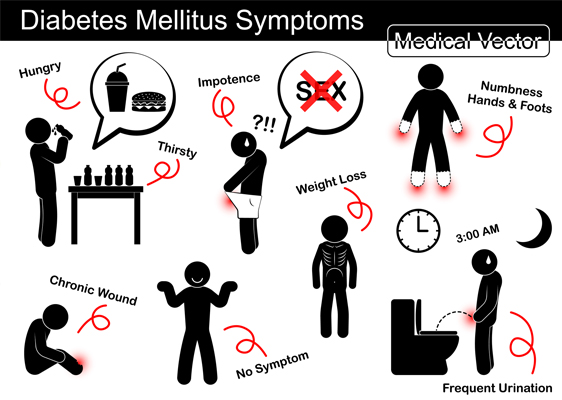
 What causes Type 1 Diabetes?
What causes Type 1 Diabetes?
The pancreas is a gland found in the abdomen near the small bowel. It produces a number of hormones including insulin which is the main hormone in the body to keep blood sugar levels in the normal range.
Type 1 diabetes is due to “antibodies” (part of our immune system) which for reasons we don’t fully understand turn against the cells in the pancreas gland which make insulin. As a result the body is unable to produce enough insulin and blood sugar levels can rise very rapidly.
People gradually feel more unwell usually over a 6 to 8 week period. These symptoms often consist of passing a lot more urine than usual, having a significant thirst, often losing weight and feeling tired. If not identified and treated at this point, the person can become very unwell involving vomiting, generalised weakness and drowsiness. At this point hospital admission is required.
As the person with type 1 diabetes no longer has enough insulin hormone, this has to be given to them and at present this can only be done by injection form. This is done using insulin, whereby the person injects themselves via a tiny needle with the appropriate amount of insulin. This is essentially painless for the majority of people. Most people with Type 1 Diabetes are on four injections of insulin a day – one “long-acting” insulin before bed to give a background level of insulin in the body and “short-acting” insulin before each of the three main meals of the day.

The amount of insulin required is determined by the amount of carbohydrate the person is going to eat and what their blood sugar level is.

A device called a glucometer allows people to check their blood sugar levels by doing a finger prick with a small needle and inserting the drop of blood onto the glucometer.
Certain individuals with type 1 diabetes may benefit from an insulin pump. This is a device which is worn continuously and delivers insulin via a small cannula which is placed just under the surface of the skin every two to three days. This means the person no longer has to inject insulin, but he/she still needs to check sugars very regularly and be skilled at very accurately estimating the amount of carbohydrate content in each meal.


Complications from Type 1 diabetes only occur after a number of years of poor control and we aim to minimise their occurrence in the majority of people. One of the first complications that can occur is damage to the small vessels in the eyes – diabetic retinopathy. This can range from minor changes with no impact on vision to significant changes which can lead to blindness.
Other complications include damage to the nerves and poor circulation in the feet. This can cause ulcers and even result amputation

Controllong blood pressure as well as blood sugars is important to avoid kidney failure and dialysis.